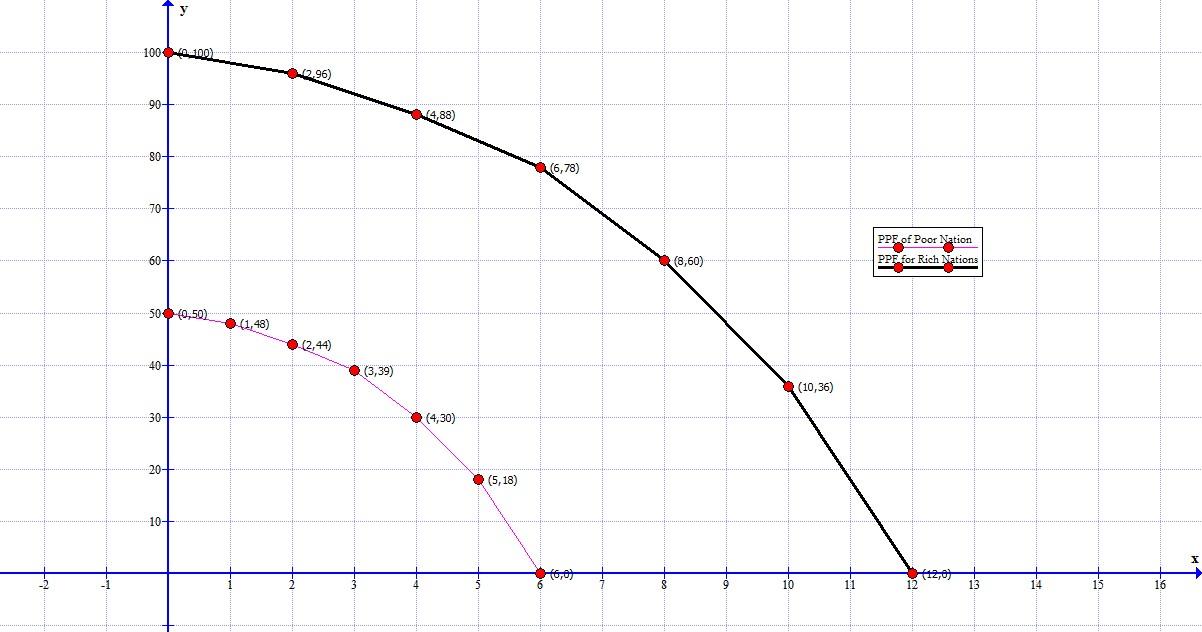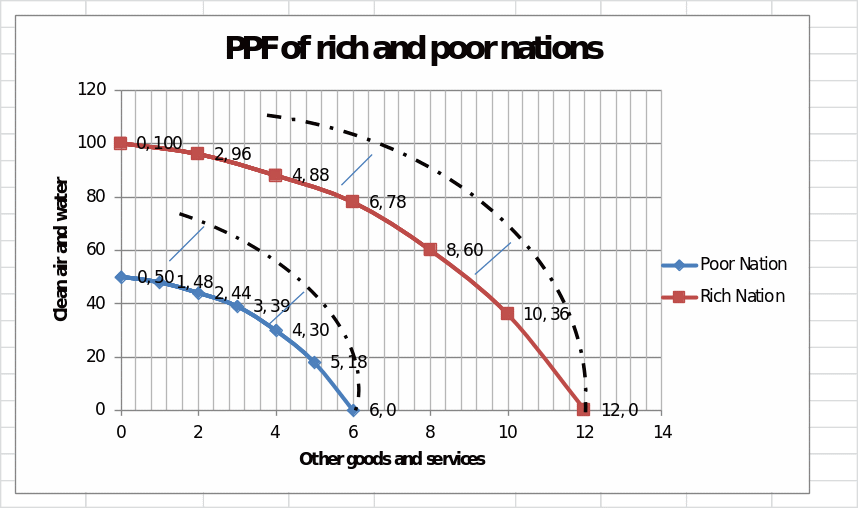Hypothetical PPF for a wealthy and developing country

The effects of environmental quality on the PPF
It is apparent from figure 1 that a developing nation has a smaller PPF compared with a wealthy nation. This is an indicator of limited resources and level of technology. Furthermore, the shape and size of production possibility frontier faced by developing and wealthy country defer because of economic, political, and social systems in the respective country. Bearing in mind the mentioned difference, there is clear evidence that environmental quality has a greater impact on a wealthy nation than a developing nation. This means that a wealthy nation will reduce the greater volume of output than developing the nation in an attempt to increase the level of clean air and water.
The trade-off that people in wealthy and developing will experience when there are equal increases in clean air and water varies with shape and size of production possibility frontier. As stated earlier, people in developed countries will encounter the greater impact of an increase in clean air and water than those in a developing nation. The effect is an outward shift in production possibility frontier, as shown in the diagram below.

The resultant outward shift in production possibility frontier is in the direction shown by the arrows.
The productivity of a nation can be increased through trade and specialization. The increase in productivity is reflected by an outward shift in production possibility frontier. According to Mankiw (24), production possibility frontier outlines a combination of goods and services to be produced through the utilization of available factors of production and technology. To understand the impact of specialization and trade on production possibilities, it is essential to shedding light on the concept of comparative advantage. Mankiw (53) explains that comparative advantage is the ability of a firm to produce particular goods and services at lower opportunity cost compared with another firm. In this case, the opportunity cost is the best alternative forgone for another option. A situation where firms concentrate on producing goods and services for which they hold a comparative advantage has the outcome of increasing production for the entire economy.
Assuming that a wealthy nation moves from output level of 6 units of other goods and services and 78 units of clean water air and water to output of 4 units of other goods and services and 88 units of clean water air and water, the resultant opportunity cost means that the production of more units of clean air and water would require the sacrifice of more units of goods and service at the rate of 0.2. A developing nation will also substitute production of one good for another in the same manner as a developed country. Considering the opportunity cost, the output will be increased by specializing in the production of goods and services where a country holds a comparative advantage (Hall and Lieberman 82). Without trade and specialization, a country is only able to consume on its frontier or inside the frontier. Trade and specialization come in to allow a country to consume outside its frontier. Nonetheless, trade and specialization cannot be universally applied because countries have a different level of resources and technology.
International treaties such as the Kyoto Protocol demands greater emission targets for developed countries compared with developing countries. The rationale for this position is that developed countries emit more because of high output as demonstrated by the size of production possibility frontier.
Works Cited
Hall, Robert, and Marc, Lieberman. Microeconomics: Principles and Applications, Mason, OH: Thomson, 2007. Print.
Mankiw, Gregory. Principles of Economics, Mason: Cengage Learning, 2014. Print.